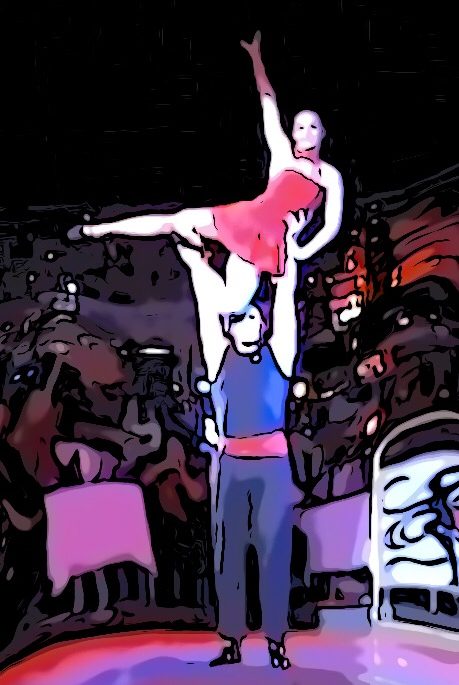The throw is a dynamic trick in which the flyer has also be caught again, even if he lands on the ground.
The throw bears much resemblance to a rocket launch …
- A jolt during the throw upsets and deforms the flyer. The result is shear forces that pull the flyer out of the line of force (→ a real rocket does not move a millimeter after ignition)
- Direction and rotation are initially the responsibility of the base, corrections of the flyer are not helpful (→ the rotation of the earth is an important component of the rocket launch)
- The flyer is accelerated and thrown before he gets involved (→ a rocket has control nozzles… the flyer instead changes his shape accordingly)
- As soon as the flyer reaches the highest point, the landing preparations begin.
In the dynamics of catching the base is about 8 times more loaded than while balancing. In the dynamics of catching the base is about 8 times more loaded than balancing. The load is even higher than when throwing, because during the catch a jerk is hard to avoid.
Thrown tricks only make sense if base and flyer without throw master safely the final position (ie 100% reproducible).
The physics of catching becomes very easy if the flyer is reduced to one point. At the highest point, the kinetic energy = 0. The fall height in acrobatics is normally between 0.5 m – 2 m, while an experienced base gets a braking distance of about 1 m. An average flyer weighs around 50 kg and needs approximately 1 kN braking force at half the braking distance (with F = W/s).
The base has twice the strain while catching compared to just balancing the flyer. At half the braking distance moreover doubles the necessary catch force!
So far, it is still manageable … (more details → Biomechanics)
In reality, however, rotational and shear forces are added.
The load thus doubles once more, because when catching other factors such as a jerk or a one-handed catching are initially unavoidable. For example, if the flyer still rotates in the direction of the fall line at the time of catching, the rotational energy will add up with the trapping energy, which can have the effect of a punch on the base! This can lead to 8 times the load of the base. On average, 400 kg, even if only for a short time on the hands to balance, creates no base!
If the base does not find the force line, or the flyer develops shear forces, even simple tricks can quickly become dangerous (→ Safety).
Deutsch

